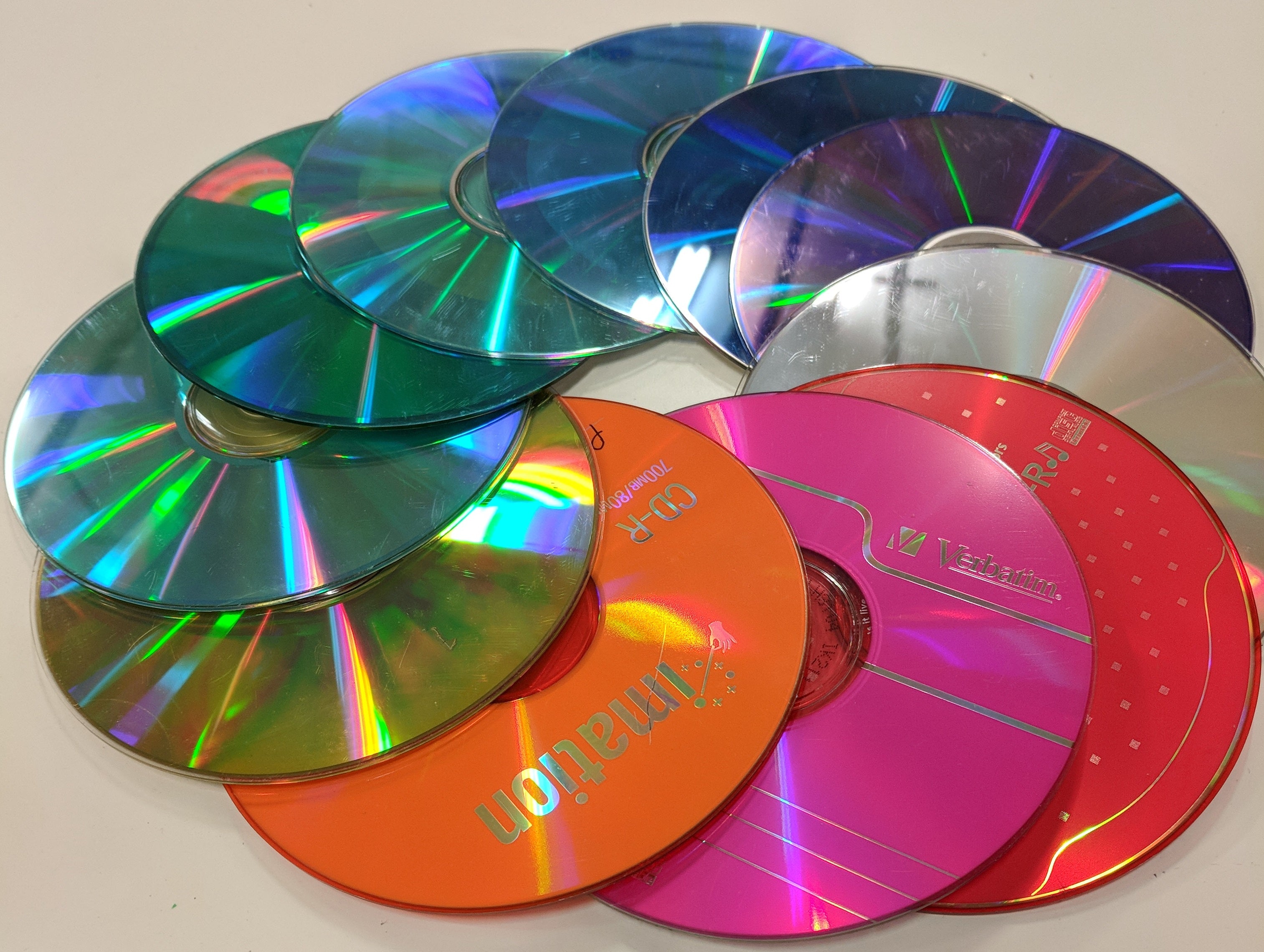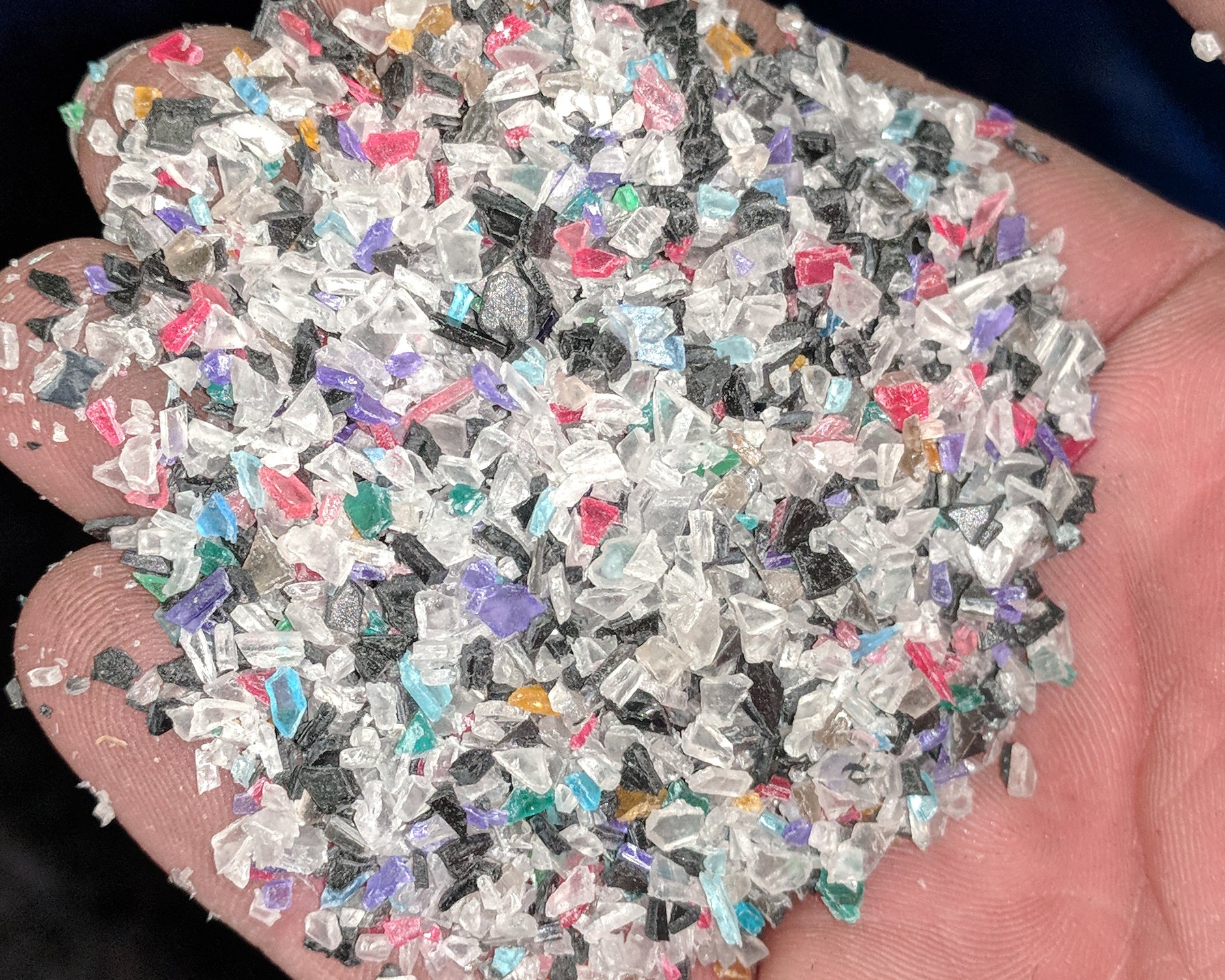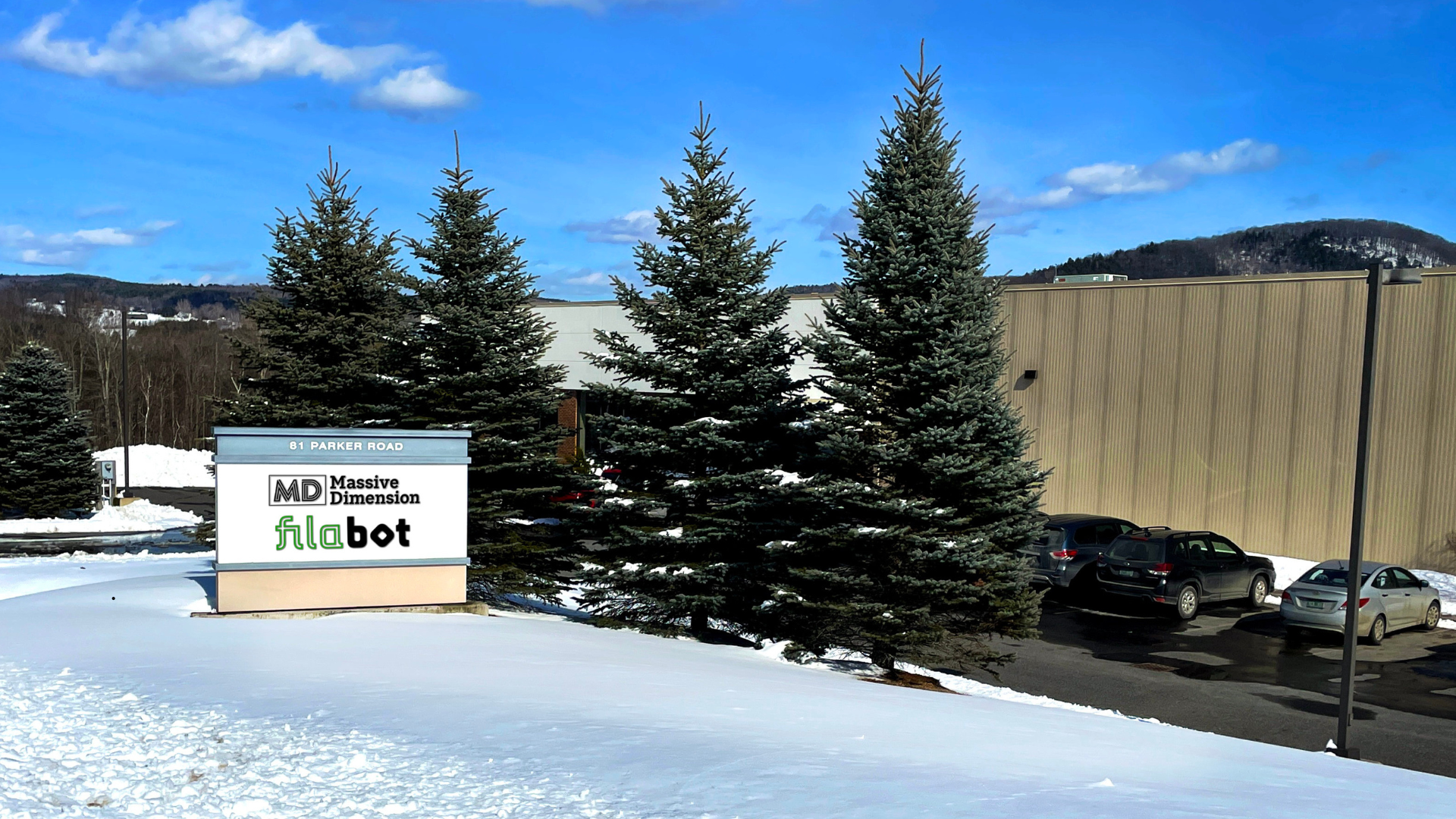Every year, billions of toothbrushes are purchased around the world - which means billions are thrown away. I'm not sure about you, but my toothbrushes don't have a recycling stamp on them, which means they're going in the landfill. But do they have to?
We purchased some bulk toothbrushes to find out. They weren't expensive and had the advantage of all being the same kind of plastic, which makes testing much easier. Further, they were clean.
What kind of plastic? We're not sure, but we suspect it's a type of polypropylene. We did find the bristles were made of a different kind of plastic, so we had to remove them before we set out grinding. Different toothbrushes have different methods of retaining the bristles into the head of the brush. In our case, these bristles were held in with a small, metal staple. Definitely not something we want to feed through the extruder!
After considering a number of ways to remove the bristles, we settled on clipping off the heads entirely. Once we did that, we were left with only the handles, and we set about grinding the toothbrushes. We didn't separate the colors, but if you wanted uniformly colored filament, you certainly could.
Next up was extrusion; converting the grindings into filament. Shortly after starting the extrusion we faced an issue cooling the filament quickly enough that it didn't warp.
If you've been reading our blog, you know that we faced this problem with our testing of vacuum nozzles as filament. During our Filabot Live recap of that material, we discussed the idea of using a water bath to cool the filament faster than with an airpath alone.
Since we faced a similar challenge with this plastic, we decided it was time to test our theory. We ran filament through a water bath immediately after extruding (with our Filabot EX6 Filament Extruder), which cooled it very well. We did use a Filabot Airpath filament cooler as well. We were careful to monitor the amount of moisture coming off the filament as it passed over the Airpath. We'd suggest you do the same, as the Airpath is not designed to take on water. (Sorry, we can't replace your Airpath under warranty if it suffers water damage!)
This combination gave us acceptable tolerance on the filament as it spooled. While you could probably achieve printable filament without the water bath, it's a simple enough modification that it's worth using. We plan to do more experimentation with water-cooling filament in the future. If you start using a water bath for filament, let us know!
In the end, we made a test print with our standard Filabot test file, and it came out good. Not only did the process work out in a way that we made viable filament, we were able to successfully test a theory we had (the water bath) and improve the filament quality.
If you'd like to download the full report, including temperature settings and other data, you can find that here.
Of course, we have a few free samples of toothbrush filament over on the store. Go grab yours before they run out! Click here for sample





2 comments
Zack
What extrusion temp did you use?
What extrusion temp did you use?
Jonathan
I’m so thankful for the technology that you are developing and the incredible beneficial environmental implications that come with it. It’s that potential for driving sustainable practice that has me interested in getting a Filabot for my school. Not in any way trying to be argumentative – why the decision to use new plastic for this test? From a feasibility or proof of concept standpoint I understand completely, but I think it would be really powerful to see how useful our used plastic can really be, while speaking to the purpose of Filabot’s technology, which – in my view – is reducing the amount of new plastic that we generate and put into the world.
I’m so thankful for the technology that you are developing and the incredible beneficial environmental implications that come with it. It’s that potential for driving sustainable practice that has me interested in getting a Filabot for my school. Not in any way trying to be argumentative – why the decision to use new plastic for this test? From a feasibility or proof of concept standpoint I understand completely, but I think it would be really powerful to see how useful our used plastic can really be, while speaking to the purpose of Filabot’s technology, which – in my view – is reducing the amount of new plastic that we generate and put into the world.